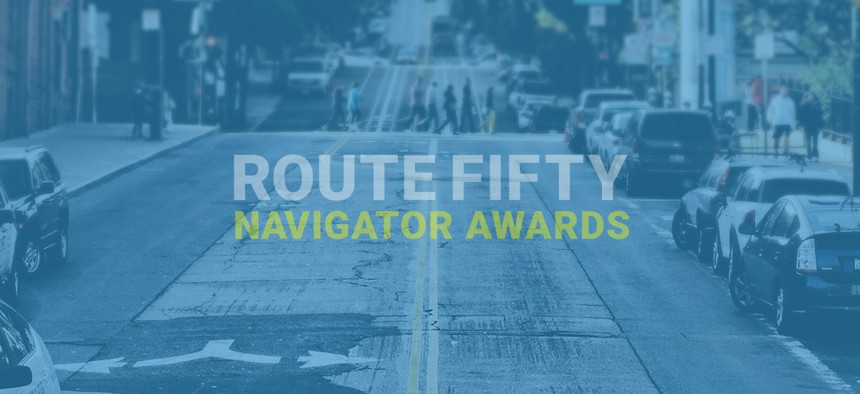Navigator Award Finalists: Buffalo Mayor Byron W. Brown and Team

Using municipal data to expand a blight-fighting program that strengthen communities and improves city services.
This is the 28th in a series of profiles on the 50 finalists for Route Fifty’s Navigator Awards program. The first 10 finalists were from the Government Allies and Cross-Sector Partners category. Finalists 11-20 were from the Agency and Department Leadership category. Finalists 21-30 were from the Executive Leadership category. Finalists 31-40 were from the Next Generation category. Finalists 41-50 were from the Data and IT Innovators category. Explore our complete list of 50 finalists.
During the challenging budget years of 2007 and 2008 when so many municipal governments were making tough decisions to cut costs and streamline operations, Buffalo Mayor Byron W. Brown was determined to save a popular blight-fighting program that had been started by his predecessor, Anthony M. Masiello.
That program, Operation Clean Sweep, brought local law enforcement together with health and human service providers, community groups and federal, state and local stakeholders to join forces to resolve problems in targeted areas in western New York’s largest city.
Brown, a Route Fifty Navigator Award finalist, didn’t just want to save Operation Clean Sweep. The mayor, first elected in 2005, wanted to expand it, too.
“Commitment to this cause required a fundamental change in methodology,” according to a Navigator Awards nomination submission. “It was no longer enough to choose neighborhoods for Clean Sweeps based on ‘gut feelings.’”
So in 2008, the city deployed its 311 Call and Resolution Center and began using data analysis of 3-1-1 and 9-1-1 calls to get a better sense of citizen interactions with municipal agencies and identify Buffalo’s most-challenging neighborhoods so the deployment of resources could be prioritized accordingly. The on-the-ground intelligence gave Byron’s administration and the stakeholder groups working with the city more information regarding everything from stray dogs to reports of noise to potholes.
Through the Clean Sweep collaborations, targeted resources can be directed to needs like boarding up abandoned structures, graffiti removal, repairing signs and streetlights and mowing overgrown lots. Social service providers and volunteers often go door to door as part of Operation Clean Sweep to distribute information about employment and health care resources, install smoke detectors, test blood pressure, establish neighborhood watch programs and otherwise build stronger relationships with the community.
The program was recognized with a 2016 Technology ROI Award and last year, a Computerworld Data + Editors’ Choice Award.
“Use of an inter-department and inter-agency collaborative approach to pool resources creates an innovative model for cost-effective public sector service delivery,” Brown wrote in a Route Fifty guest article this summer.
In 2015, Buffalo hosted 30 Clean Sweeps across the city and more than 30 were planned for 2016.
According to the nomination submission:
LAGAN Enterprise from KANA, the data platform implemented by Buffalo to improve Operation Clean Sweep, conducted a case study that determined that the implementation had an annual return on investment of 512% for the city, including a $2.4 million average annual benefit for the city. They also concluded that the successful implementation of the system helped Buffalo accomplish the work of what would have otherwise required hiring 40 additional staff members.
That’s a good use of resources that can help the city meet multiple challenges as part of the same outreach campaign.
We’re happy to name Mayor Brown and his team at Buffalo City Hall, including Oswaldo Mestre Jr., the chief service officer and director of citizen services, as Navigator Awards finalists for their hard work to take an impactful idea and make it better while strengthening community ties in the process.
Michael Grass is Executive Editor of Government Executive’s Route Fifty and is based in Seattle.
NEXT STORY: 3rd Installment of the Knight Cities Challenge Begins






